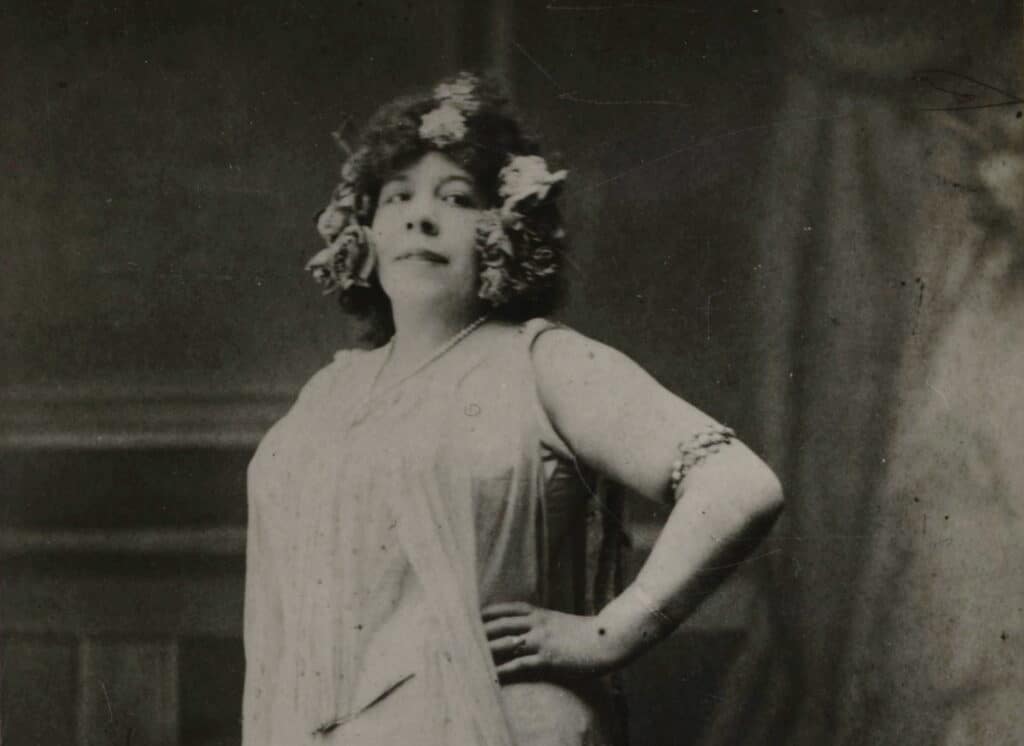Born on March 10, 1866, in Upper Norwood, London, Amanda Aldridge was the third child of Ira Frederick Aldridge, an African American actor famous for his performances in Shakespearean plays, and his second wife, Amanda Brandt, who was Swedish. She received training in voice from Jenny Lind and Sir George Henschel at the Royal College of Music in London and also studied harmony and counterpoint with Frederick Bridge and Francis Edward Gladstone.
RELATED: Who is Doris Pilkington Garimara? Australian Author(1937 – 2014)
After completing her studies, Aldridge worked as a concert singer, piano accompanist, and voice teacher. However, a throat condition forced her to stop performing in concerts, and she turned her attention to teaching. She wrote around thirty songs between 1907 and 1925, in a romantic parlor style, and also created instrumental music in other genres.
She had several noteworthy pupils, including Roland Hayes, Lawrence Benjamin Brown, Marian Anderson, and Paul Robeson. At the age of 88, she made her first appearance on television, singing Montague Ring’s “Little Southern Love Song” on the British show Music For You. She passed away in London on March 9, 1956, after a brief illness.
Table of Contents
About Her Life
Amanda Aldridge, the daughter of African-American actor Ira Frederick Aldridge and his Swedish wife Amanda Brandt, was born on 10 March 1866 in Upper Norwood, London. She had two sisters, Rachael and Luranah, and two brothers, Ira Daniel, and Ira Frederick. Aldridge studied voice under Jenny Lind and George Henschel at the Royal College of Music in London, as well as harmony and counterpoint with Frederick Bridge and Francis Edward Gladstone.
After completing her studies, Aldridge pursued a career as a concert singer, piano accompanist, and voice teacher. However, a throat condition put an end to her concert performances, and she shifted her focus to teaching. She wrote around thirty songs in a romantic parlor style, as well as instrumental music in other styles.
Among her students were the children of London’s politically-active Black middle classes, including several notable performers such as Roland Hayes, Lawrence Benjamin Brown, Marian Anderson, and Paul Robeson. In 1930, when Robeson performed as Othello in the West End, Aldridge gave him the gold earrings that her father had worn as Othello.

Aldridge was also known for caring for her sister Luranah Aldridge, an opera singer who fell ill. Amanda declined an invitation from W. E. B. Du Bois attended the second Pan-African Congress in 1921, citing her sister’s illness as the reason.
At the age of 88, Aldridge made her first television appearance in the British show Music For You. She passed away on 9 March 1956, a day before her 90th birthday, after a short illness. Aldridge was honored by Google with a Doodle in 2022, and her life and career were featured in an illustrated feature by Stephen Bourne in The Historian in the Autumn of 2020. Bourne had previously written Aldridge’s article for the Oxford Dictionary of National Biography.
Amanda Aldridge Style
After suffering from laryngitis that damaged her throat, Aldridge decided to end her singing career and focus on composing and teaching music. Her compositions mainly consisted of Romantic parlor music, which was a popular style of music performed in middle-class homes, often by amateur singers and pianists.

She used the pseudonym Montague Ring for her published works and gained recognition for her voice and piano compositions, including love songs, suites, sambas, and light orchestral pieces that blended multiple genres.
RELATED: Who is Barbara Mandrell? Everything You Need To Know
Amanda Aldridge’s Work
- “An Assyrian Love Song” (1921)
- “Azalea” (1907)
- “Blue Days of June” (1915)
- “The Bride” (1910)
- “The Fickle Songster” (1908)
- “Little Brown Messenger” (1912)
- “Little Missie Cakewalk” (1908)
- “Little Rose in My Hair” (1917)
- “Two Little Southern Songs” (1912)
- “Love’s Golden Day” (1917)
- “Miss Magnolia Brown” (1907)
- “My Dreamy, Creamy, Coloured Girl” (1907)
- “My Little Corncrake Coon” (1908)
- “Simple Wisdom” (1908)
- “A Song of Spring” (1909)
- “Summah is de Lovin’ Time. A Summer Night” (1925)
- “A Summer Love Song” (1907)
- “Three African Dances” (1913)
- “Supplication” (1914)
- “Through the Day” (1910)
- “‘Tis Morning” (1925)
- “When the Coloured Lady Saunters Down the Street” (1907)
- “Where the Paw-Paw Grows” (1907)
What is a parlour song?
A parlour song is a type of popular song designed for intimate settings, meant to be shared among friends. These songs are known for their memorable melodies and instant humanity, wearing their emotions on the outside. They were composed for voice and piano accompaniment, with the intention of being accessible to both amateur and professional musicians.
Many talented women, like May Brahe, Amy Woodforde-Finden, Carrie Jacobs-Bond, and Charlotte Alington Barnard, made significant contributions to the parlour song genre. The success of Charlotte Alington Barnard’s ballads even drew criticism from rival publishers who claimed they degraded public taste due to their ease of performance and catchy nature.
Why don’t we hear more parlour songs today?
Parlour songs have become less prominent today due to their association with the “amateur” sphere of music, which has somewhat marginalized them in music history. While “amateur” originally conveys passion and love (derived from the French term ‘amour’), it has acquired non-serious connotations. In the 19th and early 20th centuries, women’s societal roles limited them to flourish in genres like parlour songs while more “serious” professional genres remained restricted.
Speculatively, around the 1950s, classical music began to adopt a curated approach rather than embracing a mix of beloved pieces. Critics played a role as gatekeepers, deciding what was worthy of inclusion in concert series. As a result, the warmth and directness of parlour songs seemed to lose their place alongside more esteemed compositions, like Lieder and symphonies, leading to their diminished presence in contemporary music settings.
Amanda Aldridges Death
Amanda Aldridge was a British musician born on March 10, 1866, in Upper Norwood, London. She passed away on March 9, 1956, in London, United Kingdom.











